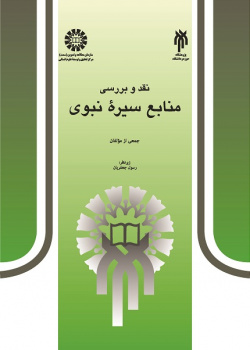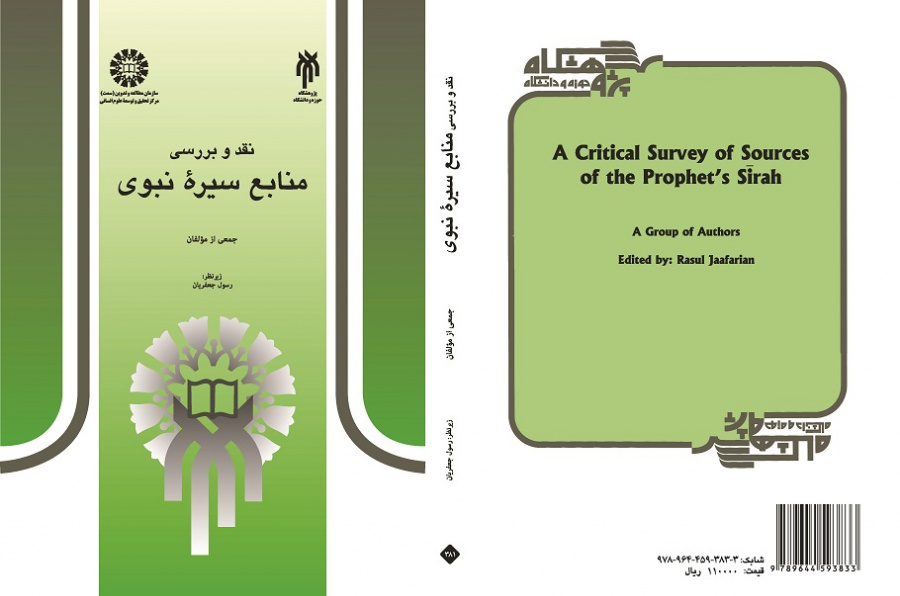

A Critical Survey of the Sources of the Prophet's Sīrah
The primary step in understanding the Sirah is the study and interpretation of the sources of Sirah. To achieve this goal, first the genesis of the early Sirah and then the discovery of relation and intertextuality between adapted and influenced works and the primary manuscripts are of prime importance.
The development of the knowledge of recording Sirah in the following centuries is a significant means of recognizing the sources of Sirah. It is necessary, of course, to meticulously study the ups and downs of these Sirahs, and delve into the scientific, religious and historical atmosphere of each period which hugely influences the quality of such writings.
The present work is compiled to shed light on some aspects of Sirah. In this book, different issues relating to the Sirah has been elected for scrutiny and analysis.
The subject of the first article is the comparison of the religious views of Ibn Hisham and Ibn Ishaq on Ali Ibn Abitalib at the time of the Holly Prophet. The second article provides an overview of two books; Aldorrar fi Ikhtisar Al-Maqazi va Al-Seir and Al-Esti’ab fi Ma’rifat Al- Ashab (by the Andalusian Ibn Abdulbar) which have been translated from Arabic and in which the features of Ibn Abdulbar’s works on the Sirah has been studied. Moreover, the subject of Ibn Hozum and the book Hajj Al-Weeda are covered. The third article discusses the role of the household of Zubayr in the compilation of the Sirah. In this part the function and influence of Zubayr in the first and the second centuries on the Sirah writing is discussed. The fourth chapter gives a comparative account of Vaqedi’s ideas and those of his pupil, Ibn-Sa’d, on the issue of the Sirah. The fifth article which focuses on Ibn Ishaq’s style in composing the Sirah is by the bibliographer and historiographer, Abd Al-Aziz Dorri, and is translated from Arabic. The sixth article is on the reports of the Sirah in Sahih Bokhari’s. The
seventh article studies the influence of historical narrations of Vaqedi on Ansab Al-Ashraf by Balazari, on the part dealing with the Sirah. The eighth article is about the missing Sirah by Musa Ibn Aqabah which was an autonomous work on the Sirah parts of which still remain contained in other works on the Sirah. The ninth article covers the historiographical expressions used in Tabaqat Al-Akbari by Ibn Sa’d which is quite a useful source in understanding the Sirah and Islamic historiography until the third century. The tenth chapter is a study of the bibliography in the book Al-Asabah fi Tmeez Al-Sahabah by Ibn Hajar Asqalani. The eleventh article is a critique of the oral news and written materials on the Holy Prophet’s Journey to Damascus. The twelfth chapter covers the bibliography compiled on the governmental system of
the Holy Prophet. The thirteenth chapter is a report on the book of Sirah Al-Bedayah va Al- Nahayah by Ibn Kathir, which has incorporated about fifty titles on the Sirah and the Maghazi (the military campaigns of the Prophet). The fourteenth article is a bibliography in Farsi and Latin on the Sirah, the list of which are kept in the specialized library of history of Iran and Islam.
Suggested as a textbook for all levels of study in higher education, this is compiled to shed light on some aspects of Sirah. Different issues relating to the Sirah has been elected for scrutiny and analysis.





